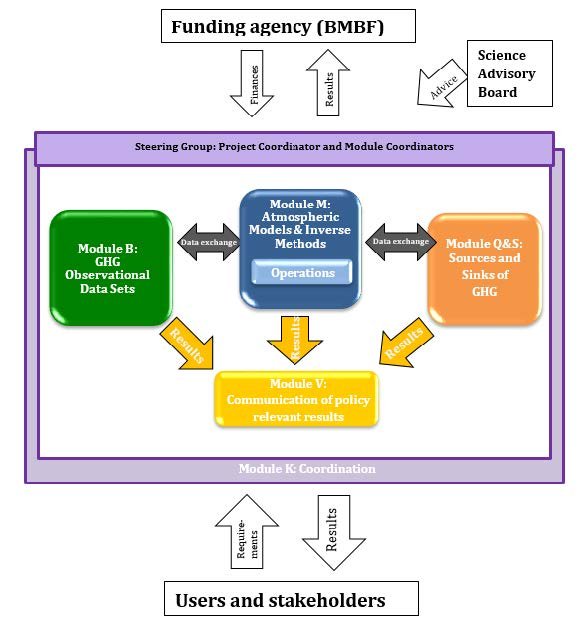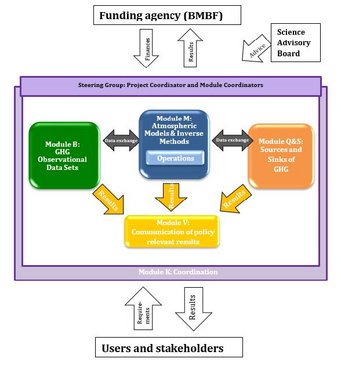
The Structure of ITMS
The first Phase of ITMS aims on the development of a demonstrator system (see TIMELINE). In this Phase the project is organised in five Modules:

Module M (“Modellierung”, Atmospheric Models & Inverse Methods)
develops atmospheric & inversion models linking the concentration data (Module B) with the surface flux parameterizations (Module Q&S), to develop a prototype ITMS. MORE.
Module B (“Beobachtung”, Greenhouse gas observational data sets for ITMS)
develops and secures data flows and quality of atmospheric GHG observations (in-situ and column concentration data) as input for the data assimilation and flux data for model verification. The data flow is building upon data from available observational infrastructure from e.g., ICOS, IAGOS, TERENO and the data products retrieved from different space-borne instrumentation (e.g. S5P, OCO-3, MERLIN, CO2M, MODIS, VIIRS). In addition, research on new observational approaches will be performed with the goal to close observational gaps. MORE.
Module Q&S („Quellen & Senken“, Sources and Sinks of Greenhouse Gases)
provides bottom-up quantification of sources and sinks, parameterising of process/ecosystem- fluxes and anthropogenic emissions of GHGs from local to regional scales such that they can be used as “a-priori” or “prior” fluxes in the other Modules. The Module develops model approaches which allow to simulate the surface-atmosphere exchange of GHG in high spatio-temporal resolution, together with a thorough assessment and communication of uncertainties. MORE.
Module K (“Koordinierung”, Coordination)
is in charge of coordination, overall operations of ITMS and management to guarantee an optimal, concerted action of all Modules to fulfil the tasks. MORE.
Module V (“Verwertung”, User interaction)
integrates users (e.g., scientists, politics, stakeholders, public) and provides consistent communication including visualization of results, as well as coordinates the contributions substantiating the national GHG reporting. MORE.
